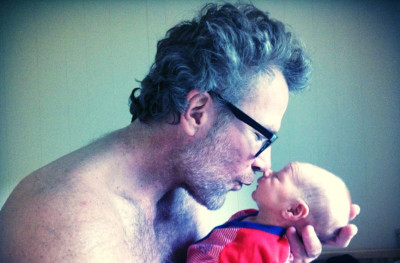(On Being)
In the yoga world, we use the Sanskrit phrase “Sthira Sukham Asanam” to describe the complementary balance of effort and ease, strength and softness necessary in every pose. Sutra 2.46 lays out the way in which each asana (literally, “seat”) should be a kind of relationship, an ongoing conversation between steady, active presence and yielding, relaxed stillness. The combination of the two qualities creates a yin-yang kind of wholeness that is strongly rooted, firm in foundation, confident and stable — and at the same time malleable, easy to adapt, gentle in spirit and undeniable in the face of transition. …
When I met my husband (unsuspecting, in a yoga class), I fell in love with his finely-tuned practice of Sthira Sukham Asanam. A longtime yogi, he was capable of being at once resolute and confident, tender and gentle. He could throw back a beer in one breath and quote Hafiz in the next. …
The most challenging practice has been finding center, grasping at sattva in the moments of sleeplessness, of relentless, bone-breaking parenting. Fumbling to stay calm at the changing table when the little man wriggles off. Struggling not to yell when he refuses to get into his high chair for the fiftieth time. Trying to be tender with one another when we’re both rundown and under-slept and haven’t showered in four days.
The idea is, of course, not to nail every posture (or every diaper change), but to let go and roll with the punches, to allow the sensations — the fear, the anger, the exhaustion — to move through you and to just get out of the way, exhaling into the quiet that’s always there under the chaos, paying attention to how everything is perpetually changing from day to day, moment to moment, breath to breath.
And then it passes.









